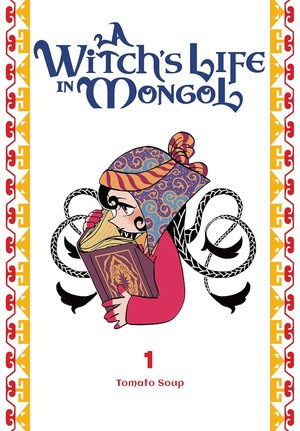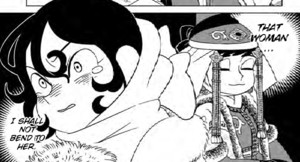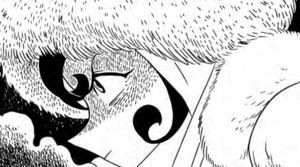The Spring 2025 Manga Guide
A Witch's Life in Mongol
What's It About?

A Witch's Life in Mongol has a story and art by Tomato Soup, with English translation by Amanda Haley. This volume is lettered by Aila Nagamine. Published by Yen Press (May 27, 2025). Rated 8+.
Is It Worth Reading?
Dee
Rating:

I've learned something about myself during my first Manga Guide marathon: I give a lot of 3.5 stars. It's a nice, respectable grade, something of a catch-all for “there's good stuff here, but…” Sadly, the “but” for this one is that it's squarely in my wheelhouse but I didn't fall in love with it, and now I have to figure out why.
A Witch's Life in Mongol is a historical fiction about overlooked people, focusing on women (and especially enslaved women) in 13th-century Persia and Mongolia. I'm not an expert on the period, so I can't speak to the accuracy, but the author seems to have done their research, weaving actual events and pivotal figures into Sitara's tale. The art is also a unique treat, combining stark black-and-white coloring, simplistic Tezuka-esque character designs, and detailed geometric backgrounds that suit both the setting and the story's interest in mathematics.
“Marginalized historical fiction” and “stylized art” sound like a winning combination, but the whole doesn't quite equal the sum of its parts. The back half of this volume is grim and bloody, as the Mongols devastate Sitara's home and loved ones. Yet there's little opportunity to feel her horror, partly due to the speedy pacing and the whimsical character designs. The art perfectly matches the quieter, more domestic scenes, but outside of one striking use of black ink to blend a woman's dress with her pooling blood, the wartime scenes all felt a bit weightless.
This first volume is a prologue, so the author may slow down and let the story (and its characters' emotions) breathe now that our “witch” has arrived in Mongol. The tonal contrast between the art and the content will be harder to address; maybe I'll get used to it, or maybe the story won't be as bloody going forward, or maybe the gravitas will always be undercut by an art style more suited to wonder than grit.
More concerningly, A Witch's Life in Mongol tries to handle the hottest of potatoes by telling a story about an enslaved girl who develops a close familial bond with her “masters”—so close that avenging them becomes her driving motivation. The story tries very hard to thread the needle of “slavery is a cruel practice but also people are complicated and human connections can form within inhumane systems,” but it falls a lot closer to “it's okay to treat people like property as long as you're nice to them” than I think it intended.
That said, some moments suggest the author is aware of this thorny undercurrent and may address it more effectively in the future. Sitara is a compelling protagonist: a shrewd survivor who boils with rage beneath her pragmatic front, all too aware of her powerlessness and the cruel ignorance of the upper class. If the series can more deeply explore her anger and sense of injustice, this could become something special. As it is, though, the “but” of uncertainty hangs over yet another 3.5-star-rated premiere.
MrAJCosplay
Rating:

Our story takes us to the thirteenth century where we follow a young girl named Fatima in the city of Tus. As a slave, she's sold to a family of scholars where she is bestowed with the philosophy of how knowledge and wisdom can help her overcome most circumstances. But little does she know that an upcoming war and invasion would put those skills to the test. This is a historical fiction story and while I am very unfamiliar with the culture and religion that this story is pulling from, I was completely enamored with it from beginning to end
Don't let the simple, almost classic aesthetic catch you off guard, this is a pretty brutal story that plays with themes of genocide, the horrors of war and it even goes into a lot of detail about the relationships between slaves compared to regular common people. Most of this is backstory establishing Fatima's circumstances and worldview where she ends up harnessing her resolve by the end as she is put in a “kill be killed" type of situation.
There are many references to religion, old science and simple philosophy scattered throughout. The presentation is able to play with those darker themes while also giving the story an almost “story time” feel to it. It does feel like I am reading a written account that was discovered centuries after it was written. The way the characters all have these curved edges to them as if they are puzzle pieces being fit in a larger scale feels appropriate considering that everybody is trying to find a place for themselves in this uncomfortable war. We have an opposition that is very easy to hate and you want Fatima to come out of this. Some of the text can be a bit overwhelming, especially when it feels like it is referencing pre-established material that not everyone might be familiar with. But I could also see this is a fantastic jumping off point for understanding the religions and cultures that it is pulling from. An unexpected surprise here but definitely a welcomed one that I can highly recommend.
Disclosure: Kadokawa World Entertainment (KWE), a wholly owned subsidiary of Kadokawa Corporation, is the majority owner of Anime News Network, LLC. Yen Press, BookWalker Global, and J-Novel Club are subsidiaries of KWE.
discuss this in the forum (28 posts) |
back to The Spring 2025 Manga Guide
Seasonal homepage / archives